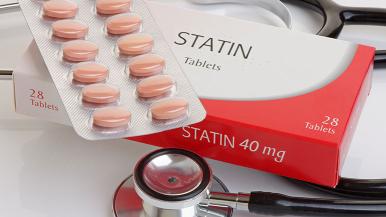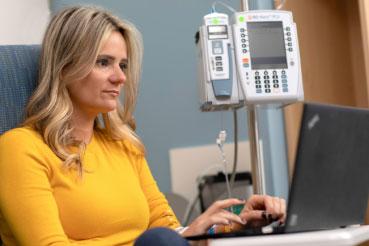Statins are a class of drugs commonly prescribed to lower cholesterol and prevent severe illness from cardiovascular disease. New research indicates they may also help people with signs of parkinsonism.
In a study published in Neurology on March 23, researchers found that older adults who take statin drugs may have a reduced risk of developing signs of parkinsonism, a movement disorder. The drugs may also lead to a reduced risk of developing atherosclerosis, or hardening of the arteries, in the brain.
“Statins reduce plaques in the arteries that are formed by too much cholesterol found in the blood. This study shows that those who are using these drugs may have a lower risk of parkinsonism, and it may be caused by a protective effect that statins may have on arteries in the brain,” said Dr. Shahram Oveisgharan, study author and assistant professor in the Department of Neurological Sciences at Rush University Medical Center.
The study followed 2,871 people for an average of six years, 936 of whom were taking statins at the time. Participants were part of the Rush Alzheimer’s Disease Center’s Memory and Aging Project, Religious Orders Study and Minority Aging Research Study. All three studies are decades-long efforts that recruit participants to undergo annual testing, sample collection and organ donation after their death.
Statin users had 16% lower risk
Researchers tracked participants’ statin use, as well as whether they used low-, medium- or high-intensity statins (based on the type of statin and dosage used). Participants were considered to show signs of parkinsonism if they had at least two of the following signs: tremor, or involuntary shaking; bradykinesia, or slowness in movement; rigidity, or stiffness in the hands, legs or neck; and parkinsonian gait, a decline in balance while walking or when standing up.
“These signs are most well-known in manifesting in Parkinson’s disease,” he said. “But parkinsonian signs have a wide range of causes, including rare syndromes, idiopathic Parkinson’s disease and others.”
After six years, participants who used statins had a 16% lower risk of developing parkinsonian signs than those who did not use statins. Researchers also performed autopsies on the brains of those who died during the course of the study (1,044 participants), and measured the levels of atherosclerosis in those who took statins versus those who did not. They found 37% lower odds of atherosclerosis in people who used statins than in people who did not.
Next steps
Oveisgharan said that the study was an encouraging step to demonstrating statins’ effectiveness in controlling parkinsonian signs.
“This was not a randomized controlled trial, so we can’t say for sure that this would be effective. That would be the next step,” he said. “But if a patient has some of these parkinsonian signs and their doctor doesn’t believe they have Parkinson’s or one of these other syndromes, it’s possible that statins may help them.”
Oveisgharan noted that the association between statin use and parkinsonian signs got stronger once the results were controlled for age, sex and vascular risks like smoking and diabetes, though not all potential confounders could be included in this particular study. He also mentioned that statins do have certain side effects, including muscle pain, and patients should consider their options carefully with their physicians. He hopes that working towards conducting a randomized controlled trial will provide more clarity and potentially help older people with movement disorders and their related symptoms.
“I was excited to see these results,” he said. “I expected that statins would have a role. But this is an observational study. There could be some things we didn’t measure for that we need to look at. We want to take the next step to really see if it’s the statins that can make a difference.”




